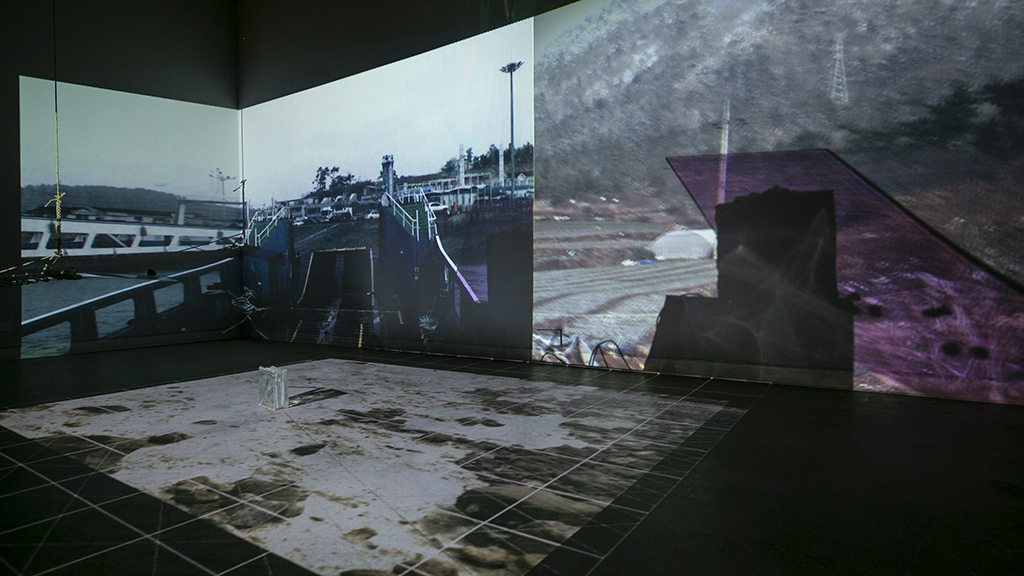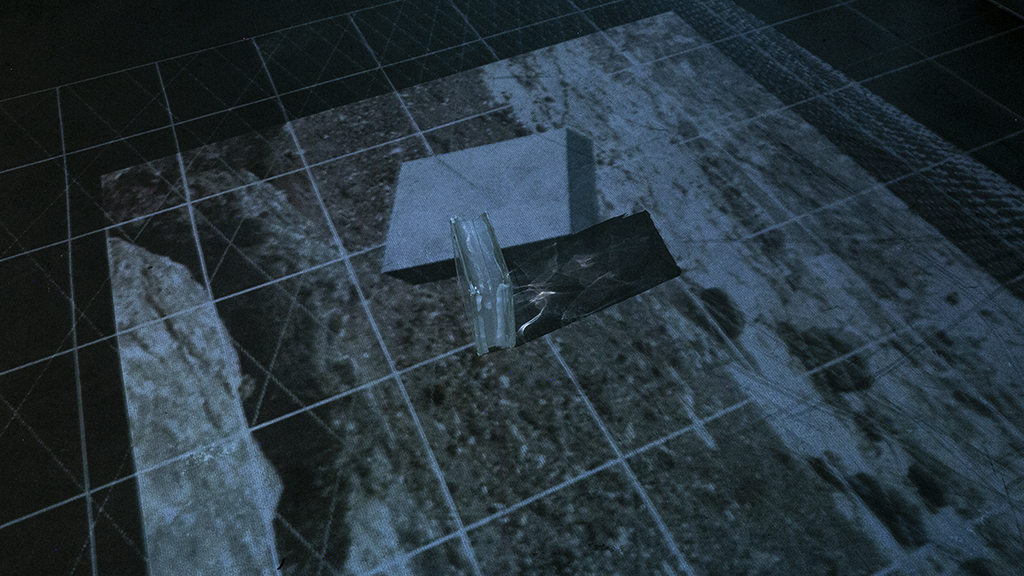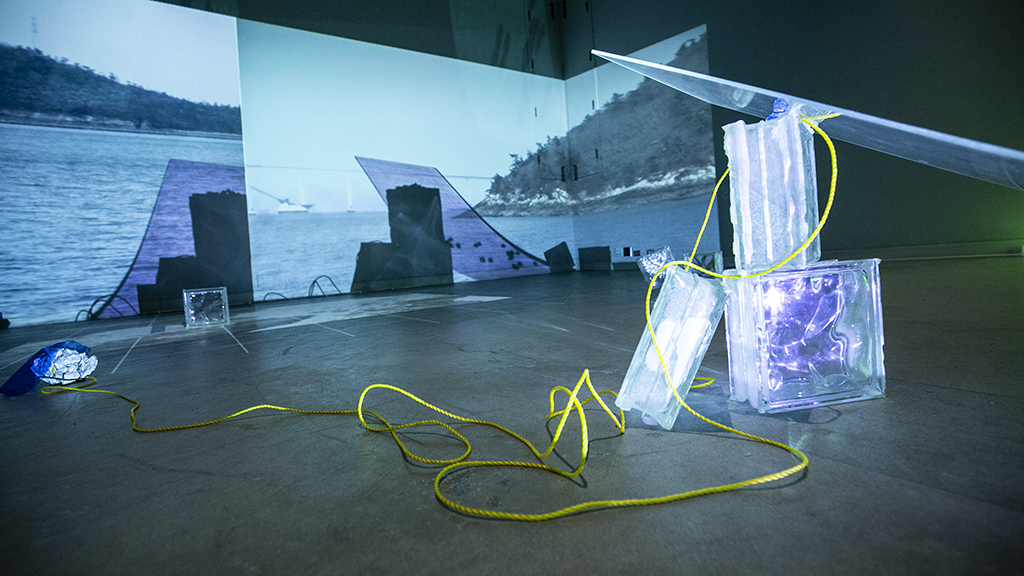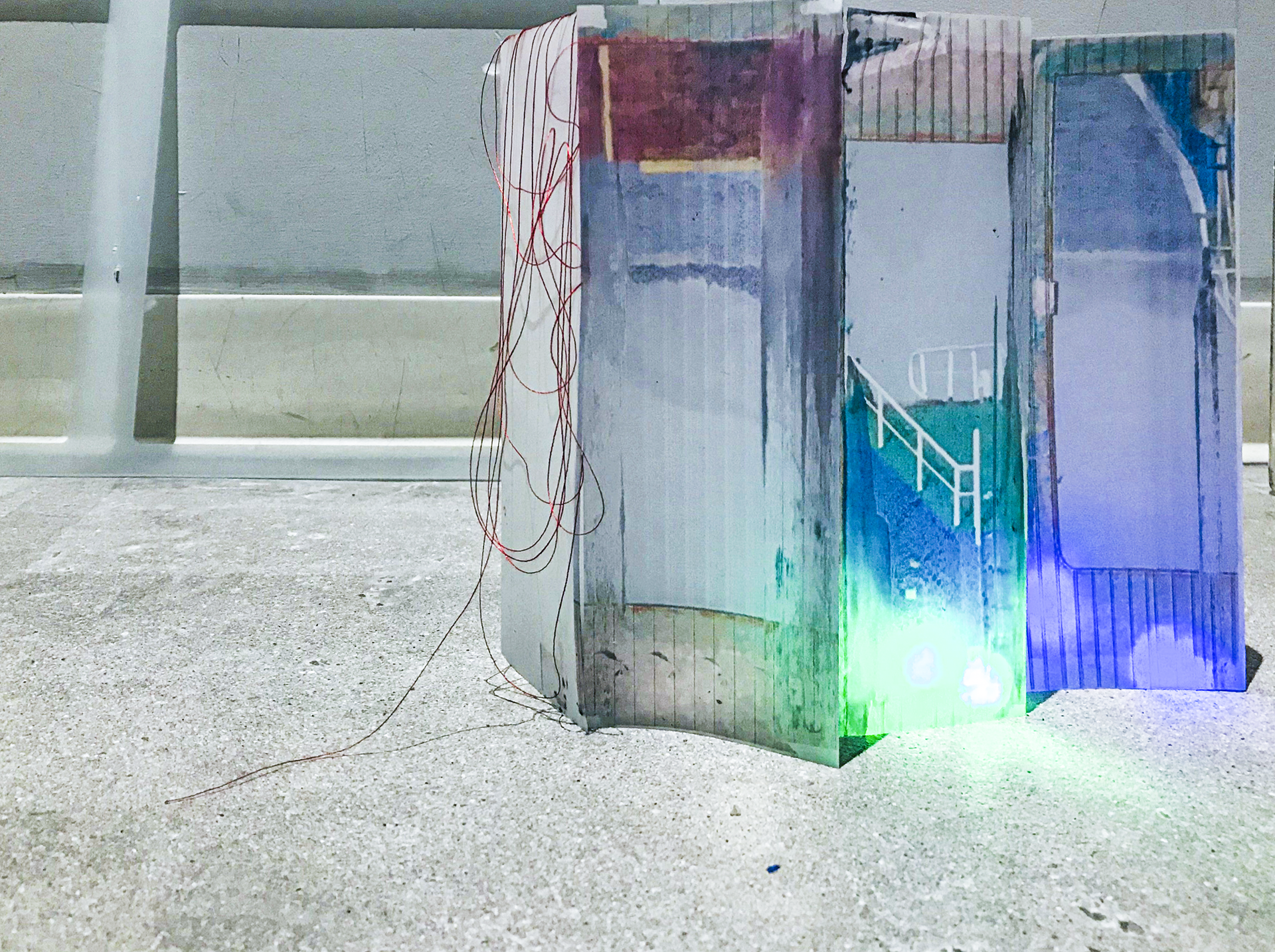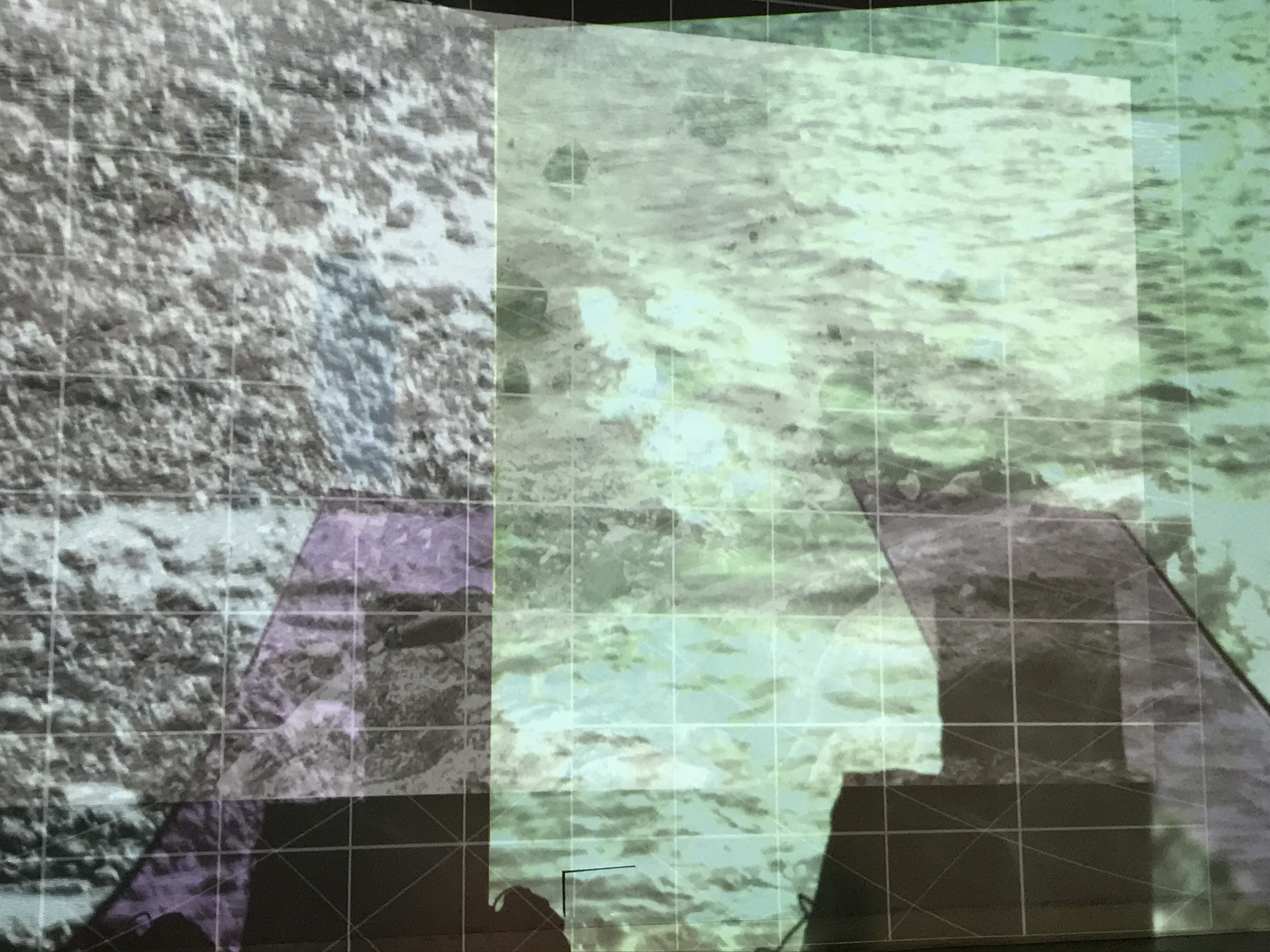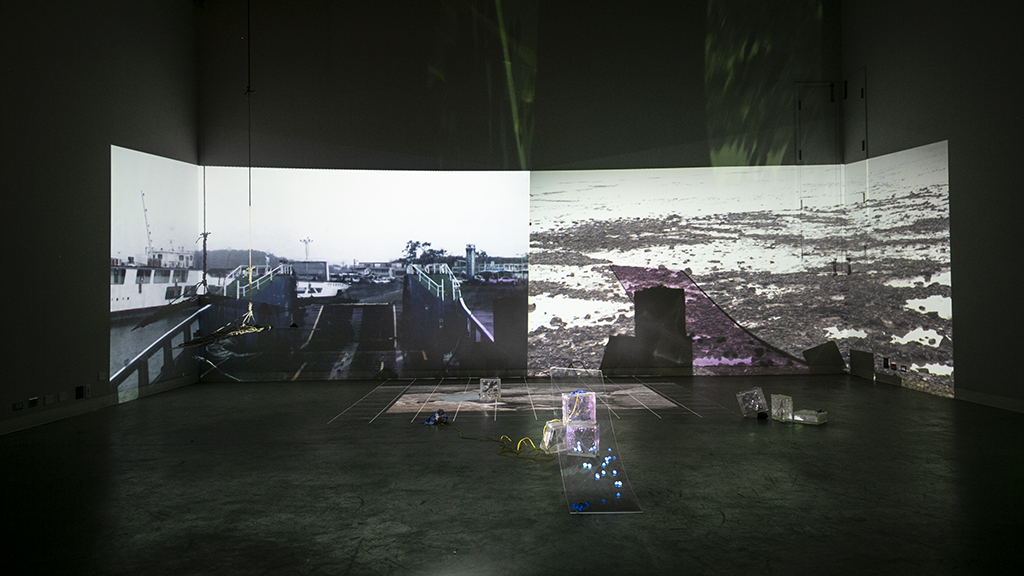Nissology 1: Maehwa, 2019
+ Three-channel videos, narration, plexiglass, plastic pebbles, glassbricks, thread, stones, acetate, and a body of paperwork, separately entitled Annotated Memoir.
+ With support from DAÏMÔN and Videographe.
+ 7:20 duration of video looping; two juxtaposed on walls and the another (a.k.a. grid video) on the ground; “S” appears and disappears constantly - six narrations of six memoirs written by me - the narrations play for three minutes in loop; resemble six times where a ship from the land is anchored at the island; each time lasts only for three minutes, and it leaves. + All objects were found on the site; recycled objects; intuitive findings. + light reflection; occurrent findings; improvisation of compositions with light reflection. + rope; composed of line and blob - tie it up only using its own body and lines.
︎
Coordinates of an island begin to vibrate; it is invisible yet surely vibrating in search of further movement. However, at the same time, the islandness and the island are held by something in the water. This grounded yet mobile coordinates of an island are different from that of a land. Thus, to an extent, coordinates of a single island correspond to the surroundings phenomenologically and vice versa; it is susceptible to the sea, weather, and each day’s climate. Likewise, circumstantial changes that happen on a single island are therefore essential for islanders, requiring restless observations and awareness on the environment. In this matter, nothing on an island is solid, nor is it liquid. This liminal state of the nature of an island can be reified best in the conceptualization of its seashore is the following:
The key feature of islands is of course the shoreline – the fixed but ever shifting perimeter. [...] of communal home – dictated by geography. [...] “in its watery isolation, every island determines a state of mind, a consciousness of limits that is not as sensible in the middle of a continent… Experience is circumscribed on an island, contained”. (Hay 21-22)
In the spirit of this notion of coordinates and geography of an island, Nissology 1: Maehwa shares a personal journey of visiting a small island in South Korea, called Maehwa-Do, where the artist’s grandmother and father were born and lived for a long time. There is only one ship that departs from the land to the island a day, so the artist was allowed only two hours of stay on the island after the long past of hers, hearing about and imagining the island since childhood. The lives of the grandmother and father living on the island must have been as vibrating as the geographical circumstances of an island are. Their everyday lives must have demanded ephemeral yet vital learnings and adjustments to what the water and island could offer to them. Contemplating on their fluid “coordinates” of the way to sustain days on the island, the artist looks at her own immigrant life in Canada. An immigrant life cannot be stable, struggling with mobility and sustainability. Within this shifting terrain of one’s life as a newcomer, the artist imagines the island of Maehwa, which had solely been told since her childhood and finally came to the actualization of standing on it in 2017. Yet, the fruition of the experience of the island failed due to the limited numbers and hours of the boat that departed the island to the land during her journey. Even for the two hours of her adventuring the island, which was the only time she allowed, the artist was shaky and adapting to the “new” geo-nature of the island as well as her identical coordinates, which were neither able to be yet found nor defined both on the island and in Canada.
Ivetta, 2019
